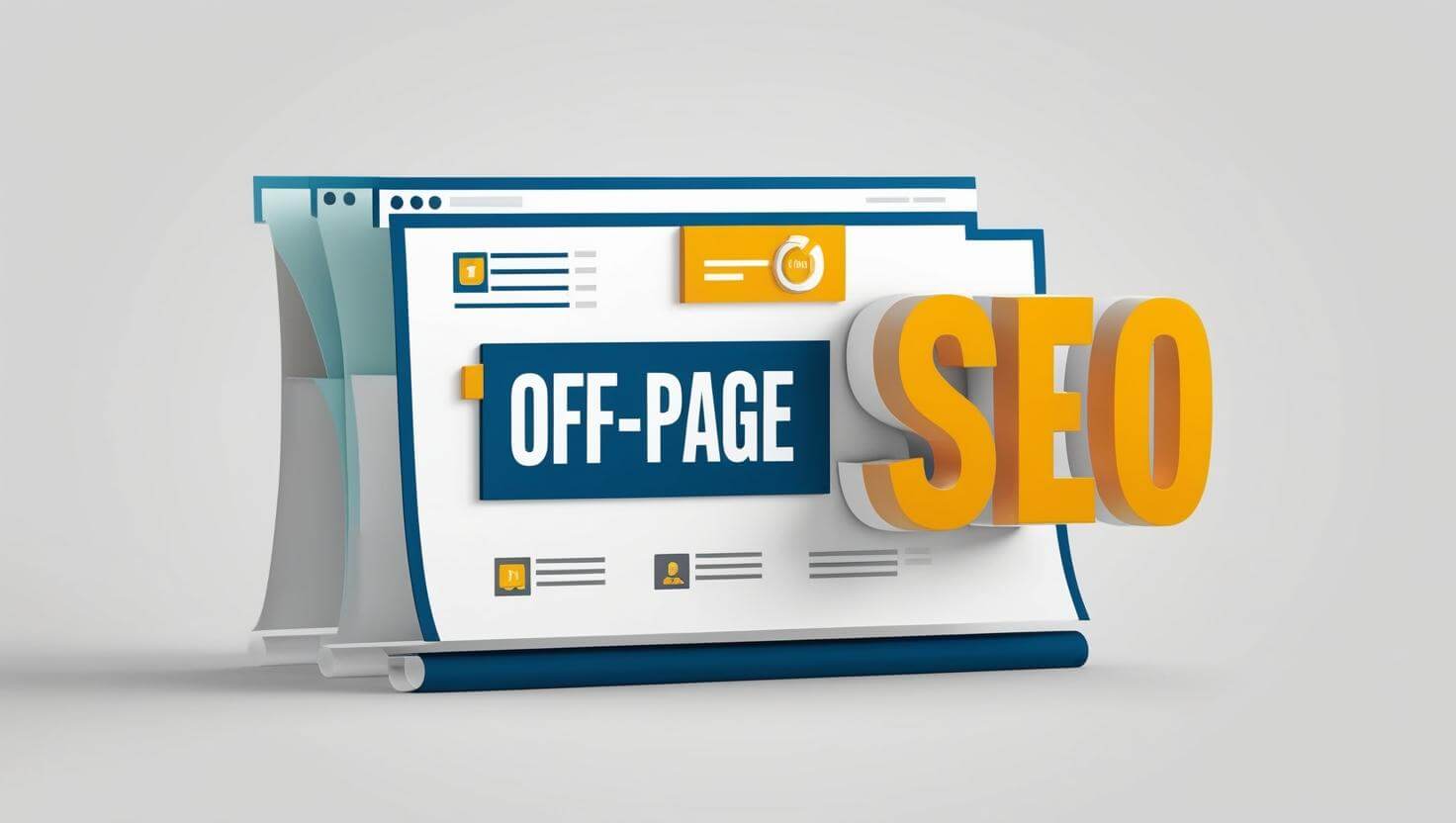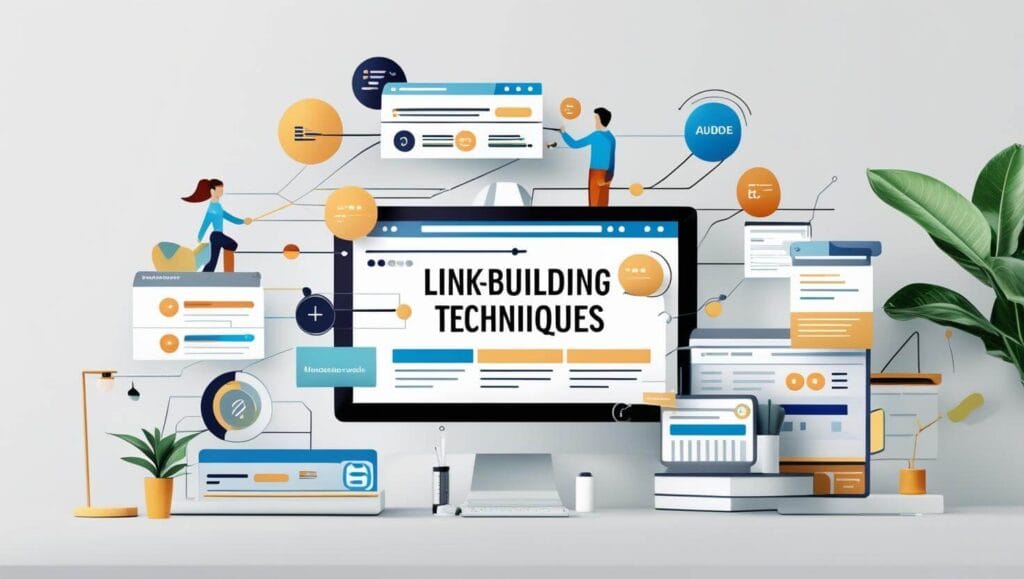Off-Page SEO For Beginners: A Complete Guide (With Checklist)

If you’ve ever wondered why some websites rank higher than others, even when the content seems similar, the answer often lies off the page. Off-page SEO is one of the most important, yet misunderstood, aspects of search engine optimization. It’s not just about what’s on your website, but what others say about your website. From backlinks and brand mentions to social signals and local citations, off-page SEO is your site’s reputation builder. In this guide, we’ll break down exactly what off-page SEO is, why it’s essential in 2025, and how you can start building your website’s authority the right way. Plus, we’ve included a practical checklist to help you take action step-by-step.
What is Off-Page SEO?
Off-page SEO refers to all the activities you do outside your website to boost its ranking in search engines. It’s everything happening off your website that affects your visibility.
While on-page SEO focuses on what’s on your website (like keywords and content) and technical SEO focuses on improving website infrastructure, off-page SEO is about building trust and authority through external factors.
The most well-known part of off-page SEO is link building (when other websites link to yours). These backlinks act like votes of confidence. The more quality votes you get, the better your chances of climbing the search engine ladder. But we will delve deeper into this topic later in the article!
Off-page SEO also includes social media mentions, brand shoutouts, guest blogging, online reviews, and even getting listed in local directories. It’s like your website’s reputation score on the web.
Why is Off-Page SEO Important in 2025?
SEO in 2025 is a must if you want to be found online in an organic way. Search engines are smarter than ever, and they’re no longer impressed by keyword stuffing or flashy graphics alone. They want to see that other people trust you too.
When your website gets mentioned, shared, or linked to by others, it sends a big green flag to Google. With competition growing in every niche, your content can be amazing, but without authority, it might never see the light of page one. That’s why mastering off-page SEO in 2025 isn’t optional. It’s your ticket to staying relevant, visible, and one step ahead.
The Core Elements of Off-Page SEO
Let’s break off-page SEO down into the core elements that matter most to Google.
1. Backlinks: The Internet’s Word-of-Mouth
Backlinks are the heart and soul of off-page SEO. When other websites link to yours, it shows Google you’re trustworthy. But not all backlinks are equal. A link from a respected site in your industry? Golden. A random link from a sketchy site? Not so much.
You want quality over quantity. One solid backlink from a high-authority site can be more powerful than 50 low-quality ones. Think of backlinks as digital word-of-mouth!
2. Brand Mentions: When People Talk About You (Even Without a Link)
Your brand can earn trust with search engines when your name is mentioned without a clickable link. These are called unlinked brand mentions. They count as a signal that your site is known, discussed, and possibly worth ranking.
Being featured in a podcast, quoted in a blog post or mentioned in a Reddit thread. It all benefits your off-page SEO. Google’s algorithms notice when people are talking about you, especially if they’re saying good things.
3. Social Signals: Shares, Likes & Emojis That Matter
Even though Google claims social signals aren’t a direct ranking factor, they’re still pretty valuable. Every time your content gets liked, shared or commented on, you’re boosting your visibility. That can lead to more backlinks down the road. Content like Instagram carousels are golden!
The more your content travels through social media, the more chances others will find it, love it and possibly link to it. Instagram and LinkedIn posts do play a role in your off-page SEO efforts!
Backlinks: The Backbone of Off-Page SEO
When it comes to off-page SEO, backlinks are the most valuable. In simple terms, a backlink is a link from one website to another. It’s like a vote of confidence from another website. This will indicate to Google that your site is trustworthy. The more trustworthy sites linking to you, the more likely you are to climb the search engine rankings.
What Makes a Backlink Powerful?
A backlink from a well-respected, high-authority site in your industry can work wonders. These sites are like the trusted referees of the internet. Google loves them! But if you get a link from a low-quality or spammy site, it could hurt your ranking.
Instead of focusing on getting tons of backlinks, aim for quality. One solid backlink from a recognized site is worth far more than a dozen from less reputable sources. Quality matters!
Building these high-quality links takes time, but it’s one of the most effective ways to boost your website’s authority.
Backlinks and Trustworthiness
Backlinks help Google determine how trustworthy and authoritative your site is. Imagine you’re looking for advice on a topic. You’re much more likely to trust an expert who’s been recommended by other experts. The same applies to your website. If reputable websites are linking to you, it signals to Google that your site is reliable and authoritative. This will boost your rankings on search engine results pages (SERPs).
By focusing on earning high-quality links, you can enhance your website’s reputation and authority.
Strategies to Get High-Quality Backlinks
Now you know why high-quality backlinks are so important, it’s time to focus on strategies that actually work.
In simple terms, there are basic link building strategies that are relatively easy to implement, and there are advanced link building strategies which require more effort but will make you stand out in competitive search results. We will take a closer look at three of the basic link building strategies perfect for starting your link building journey.
1. Create Content That Deserves to Be Linked To
No one is going to link to a boring, low-value blog post. You need to create link-worthy content. Think of ultimate guides, original research, free tools or even a really helpful infographic. The kind of content that impresses people.
Make sure your content solves a specific problem or offers a unique perspective. Make it valuable, scannable and packed with in-depth insights. That’s how you earn trust and links.
2. Reach Out With Value (Not Desperation)
Outreach still works in 2025. At least if you do it right. Skip the generic “Hey, please link to my blog” emails. Instead, offer value. Maybe you found a broken link on their site and have a better alternative (= Broken Link Building Strategy). Or maybe your content perfectly complements a resource they already link to.
To be complete, broken link building is a smart and ethical link building strategy where you find broken links on other websites and suggest your own relevant content as a replacement.
Here’s how it works: you spot a link on someone’s blog or resource page that no longer works. Maybe the page was deleted or moved. Then, you kindly let the website owner know and recommend a working link (ideally to your own helpful content) as a fix.
It’s a win-win. They get to clean up their website, and you get a valuable backlink.
3. Be a Guest, Not A Stranger
Guest blogging is a way to earn strong, high-quality backlinks for your website. It’s important that the topic you write about is relevant to your audience. Make sure to link naturally within your article, not just in the author bio. That makes it more valuable for both readers and search engines.
The Role of Content in Off-Page SEO
You might think content is only important for the on-page SEO part, but it plays a huge role in your off-page SEO too. Off-page SEO isn’t just about links and shares. It’s also about the kind of content that gets people talking, clicking and sharing your name around.
Great Content Travels (Even Off Your Site)
We’re going to keep this one short as we already discussed this in “Create Content That Deserved to Be Linked Too”. The focus is on creating content so valuable and unique that others want to share it.
Share-Worthy = Link-Worthy
Want backlinks? You need content that deserves them. Nobody’s linking to your 300-word blog post from 2017 that says “consistency is key.” You’ve got to give people something they’re proud to share. Visuals help, so use infographics, videos, or data-driven posts that provide real insight.
The best pieces of content you can make are the ones that solve real problems. If your content answers a question better than anyone else, it becomes the go-to resource people link to. And that builds authority faster than any cold email ever could.
Content Fuels Relationships (And Backlinks)
Strong content also opens doors to collaboration. Other bloggers, influencers or brands are far more likely to connect with you and link to you – if you’ve got amazing content to your name. Guest posting opportunities, podcast invites and social media shares all start with how helpful or interesting your content is.
Social Media & Brand Mentions
Social Media isn’t only useful to share memes or puppy videos. It’s also a useful tool for your off-page SEO.
Even though Google insists that social signals don’t directly affect rankings, real-world results tell a slightly different story.
When people share your content, mention your brand or tag you in posts, you’re building visibility. That visibility leads to clicks, links and authority.
Visibility First, Links Later
One big mistake beginners make? Focusing only on links and forgetting about visibility. Start with building awareness by starting conversations and getting your content circulating in the right circles. People can’t link to you if they don’t know you exist.
Local SEO & Citations
Local SEO helps a local business to show up in the search engines when someone nearby searches for your services. You don’t need to be techy to get it right. You just need to make sure your business exists online in all the right places.
What Are Citations?
Citations are online mentions of your business name, address and phone number (also called NAP). They don’t always need to include a link, but they do need to be consistent.
Where should you be listed?
The internet is full of places waiting to show off your business. Some of the best spots to get listed include:
- Google Business Profile (formerly Google My Business) — this is a must.
- Yelp, Bing Places, Apple Maps — yes, people still use these.
- Local directories in your industry — like TripAdvisor for travel or Houzz for home services.
Just make sure your NAP info is identical everywhere. Even a small difference can confuse search engines.
Reviews: The secret ingredient of local SEO
Getting listed is great, but reviews take it to the next level. Encourage happy customers to leave reviews — especially on Google. Not only do reviews influence local rankings, but they also build trust with potential customers. A glowing review is worth its weight in digital gold.
The Best Off-Page SEO Tools You Should Know About
Off-page SEO is very strategic and based on data. It isn’t just a guessing game. How do you track it all? That’s where the right tools come in the picture. With the right tools, you can monitor backlinks, spy on competitors and measure your progress.
1. Ahrefs
This tool can do a lot, but especially shines when it comes to backlinks.
With Ahrefs, you can:
- See who’s linking to your site (and who’s ghosting you).
- Find broken backlinks so you can fix or replace them.
- Spy on your competitors’ backlinks to get inspiration.
You’ll quickly see which links are helping or hurting your rankings.
2. SEMRush
SEMRush is known for its keyword research. But it has way more features for your off-page SEO. From tracking backlinks to analyzing your domain authority. It helps you see the full picture.
Here’s what you can do:
- Audit your entire backlink profile.
- Spot toxic links that need to be removed.
- Benchmark your site against competitors.
And it’s very beginner-friendly!
3. Google Search Console
Google Search Console is a free tool from Google itself. It doesn’t give you all the data, but it’s the best place to start.
Why you need it:
- See which websites are linking to yours.
- Discover which pages get the most off-site attention.
- Fix crawl errors that could hurt your SEO.
Google Search Console is a must-have in the world of SEO. Combine this with another tool or tools and you have a very powerful toolkit for your SEO.
Bonus tools
Here are a few bonus tools that can be useful for your off-page SEO:
- BuzzSumo: Great for finding shareable content and influencer outreach.
- Majestic SEO: Excellent for analyzing link trust and citation flow.
- io: Helps you find emails for outreach.
- Brand24: Alerts you when someone mentions your brand online.
Choose the right tools
You don’t need to use all of these tools listed above. Just pick the ones that fit your workflow and budget. Pick 2-3 and get familiar with them.
Please remember: tools are here to help you, not overwhelm you. Start simple and expand your knowledge from there.
Off-Page SEO Checklist
Now you know all the basics of off-page SEO, it’s time for the off-page SEO checklist. This checklist is your go-to guide for building trust, earning links and getting your site the love it deserves from search engines.
Backlink Checklist
- ✅ Create share-worthy content – Think ultimate guides, original research, or free tools that actually solve problems.
- ✅ Reach out with value – Suggest your content when it actually helps, especially during broken link outreach.
- ✅ Guest blog on relevant sites – Don’t write for random websites. Pick blogs your audience already loves.
- ✅ Use HARO or similar platforms – Help reporters and get free backlinks in return.
- ✅ Check your backlink profile – Use Ahrefs, SEMrush, or Google Search Console to see who’s linking to you.
- ✅ Fix broken backlinks – Find and replace dead links that used to point to your site.
Brand Mention Checklist
- ✅ Set up alerts for your brand name – Use Google Alerts or Brand24 to track who’s talking about you.
- ✅ Engage with brand mentions – A friendly “thanks!” goes a long way. Sometimes it turns into a backlink.
- ✅ Pitch for inclusion – Got mentioned but not linked? Kindly ask if they’ll add a link — many people will say yes!
- ✅ Collaborate with others – Podcast features, co-written posts or expert roundups help get your name out there.
Social Signals Checklist
- ✅ Share your content across platforms – Don’t just publish and pray. Share on LinkedIn, X (Twitter), Instagram, and niche communities.
- ✅ Encourage engagement – Ask questions, run polls or start a mini discussion in the comments.
- ✅ Repurpose your content – Turn blog posts into carousels, threads or short videos for more reach.
- ✅ Join conversations in your niche – Don’t spam. Just be helpful, consistent and visible.
Local SEO & Citation Checklist
- ✅ Claim your Google Business Profile – Yes, this is non-negotiable if you’re a local business.
- ✅ Add your business to local directories – Yelp, Bing Places, Apple Maps, and industry-specific directories.
- ✅ Keep your NAP consistent – Make sure your Name, Address, and Phone number match across all platforms.
- ✅ Ask for reviews – Especially on Google. Good reviews = more visibility + trust.
- ✅ Respond to reviews (even the bad ones) – It shows you care and builds credibility.


